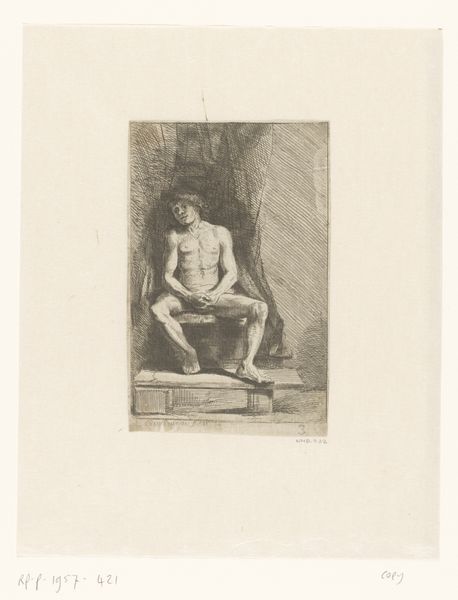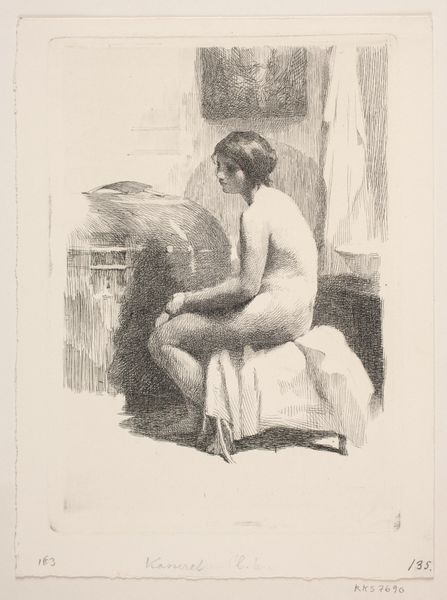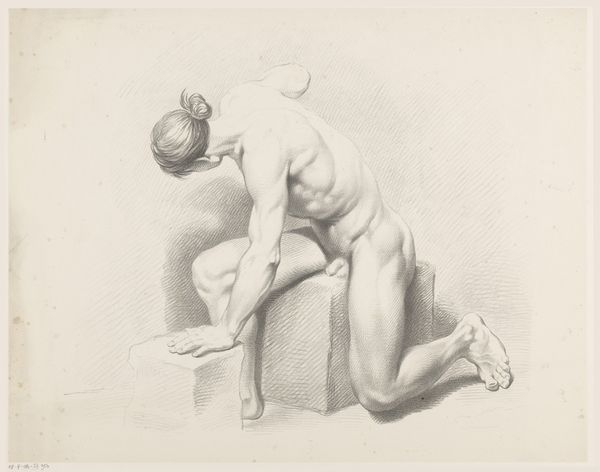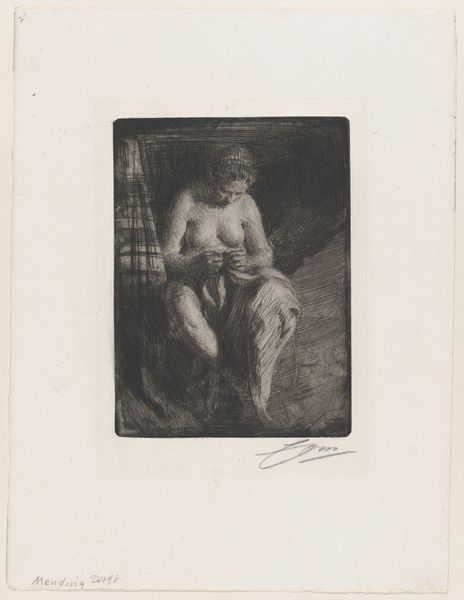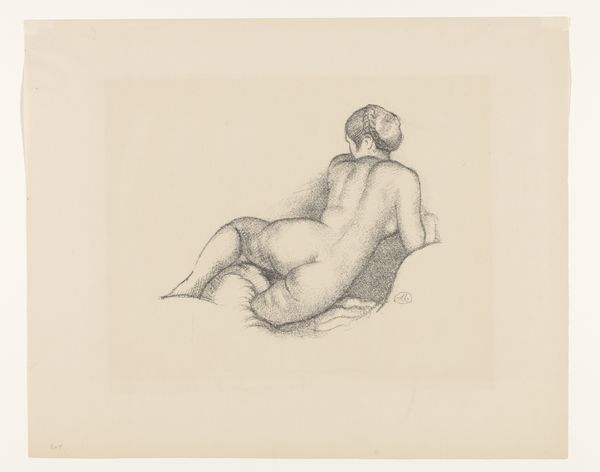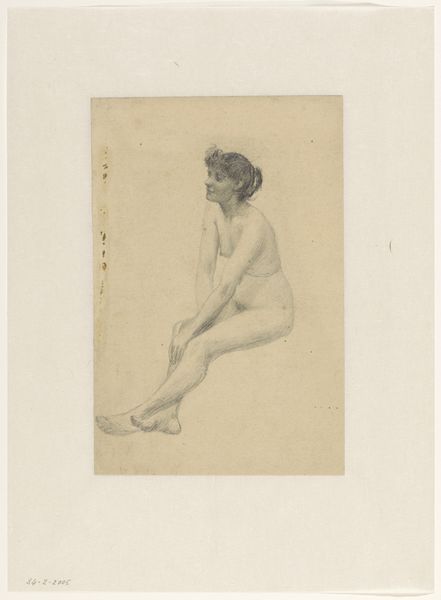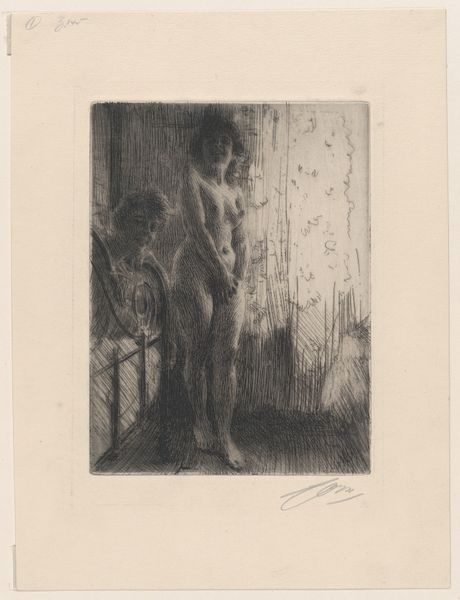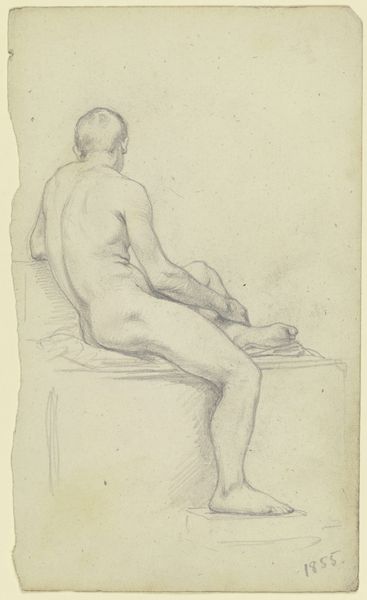
drawing, pencil
#
pencil drawn
#
drawing
#
pencil sketch
#
charcoal drawing
#
figuration
#
pencil drawing
#
pencil
#
academic-art
#
nude
Dimensions: height 78 mm, width 100 mm
Copyright: Rijks Museum: Open Domain
Curator: We’re looking at “Nude Man, Sitting on Steps at the Waterside” by Carl Bloch, created in 1881. What springs to mind for you with this work? Editor: Well, first off, it feels incredibly intimate. There’s a vulnerability in that pose, a solitary figure caught in a private moment. The limited palette gives it a timeless, almost dreamlike quality. Curator: I see what you mean. Bloch used pencil and likely some charcoal too, really mastering those subtle tonal gradations. You can almost feel the coolness of the water against his skin. Consider the paper it’s drawn on, its availability. This would have been quite commonplace at the time. Pencil was the medium for a more personal creation as opposed to painting. It also would have afforded itself to quicker compositions as well. Editor: That's a key point - it’s interesting how Bloch renders flesh, contrasting sharply with those angular lines forming the steps. I’m drawn to how it highlights both the beauty of the human form and the often-harsh realities surrounding it – the industrial feel to the architectural backdrop hints at urbanization encroaching on these moments of private reflection. Curator: Absolutely. I think the use of a readily available and accessible material allows Bloch to make something quite mundane also something really poetic. It raises questions about the male body and its relationship to work and leisure within a quickly industrializing Europe. Was this drawn from life? What did male leisure even mean in 1881? Editor: He manages to balance the ethereal with something decidedly grounded, which I feel gives the piece a lasting resonance, even today. The ripples in the water, are they reflections of some kind? How would Bloch himself perceive his relationship to labor as an artist here? He comes across in his portraiture as deeply attuned to the everyday experience, so I appreciate the social elements embedded. Curator: And perhaps that very balance, that tension between beauty and stark reality, invites us to consider our own position, how our own bodies inhabit similar spaces—the material and the ephemeral, side by side. Editor: Yes, that lingering question feels pertinent to a contemporary viewer today, a conversation started in graphite, surviving decades.
Comments
No comments
Be the first to comment and join the conversation on the ultimate creative platform.

